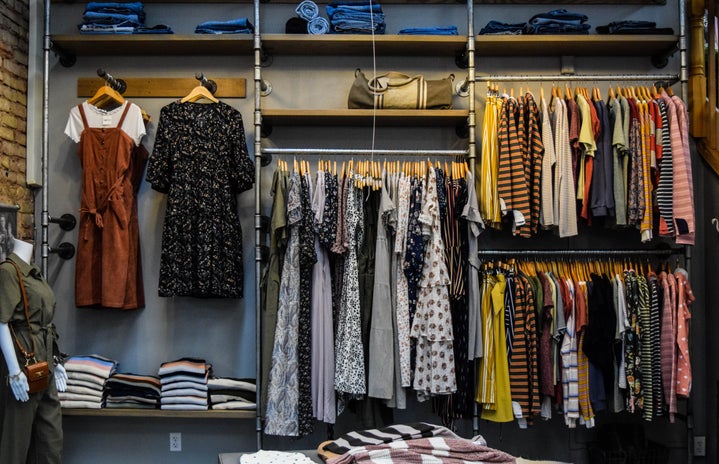Fast fashion is everywhere you look these days. It’s convenient, cheap, and most of times, on trend. We as consumers are put into a position where we want affordable clothing, fast. We expect to see the looks on shelves the week after they’re released at fashion week at the cheapest price. Yes, we as consumers are selfish. And yes, we as consumers are plagued with choosing what sounds most appealing, but unfortunately, what may be most appealing may not be the best choice.
Image Courtesy of CONE Communications
Fast fashion is currently taking over the world with speed. It’s ruining our environment at an extremely fast pace. We have no idea how dangerous the clothes on our body are in the world around us. People take fast showers to decrease water usage, but don’t realize that the cotton plant used to make the shirt they’re wearing takes up nearly six times more water to survive than lettuce. One of the most water dependent plants is taking up nearly 40% of the clothing industry in fabrics. Think about that as you wrap yourself in a cotton towel after your 3-minute shower. Polyester and nylon fabrics are made from plastic, and will physically be on this planet longer than your grandchildren’s grandchildren will be. There is an extreme amount of chemicals in clothing that people don’t know about. A study showed that there was 900 times more than the allowed amount of chemicals in clothing shipped from countries that produce fast fashion, for example from China and Southeast Asia. These chemicals aren’t safe for our bodies, let alone the environment.
In addition to the impacts fast fashion has the environment, it also takes a huge toll on the employees who make the clothing. Primarily, employees working in fast fashion are extremely underpaid and working in harsh conditions. In the last ten years there have been fires, collapsed buildings, and devastation in fast fashion warehouses. In 2013, an eight story factory in Bangladesh crashed, killing 1,000+ employees, showing how these dangerous conditions can be. November of 2012, a Bangladeshi building used for creating clothes burned down, killing 112 Workers have to hide in rooms while brand owners come to look through the building. Workers are exposed to chemicals that can result in skin irritation, rash, sickness, and even death. The fashion industry is extremely profitable, yet these employees get paid next to nothing for risking their lives every day. It becomes evident the more you read that fast fashion doesn’t just affect the planet, but the people living on it.
It’s easy to see that fast fashion gives the world better than bad, but we get it, it’s hard to avoid. There’s satisfaction with being able to purchase a new seasonal wardrobe four times a year. It’s nice to buy a shirt you’ll only wear once. If you give into fast fashion, sell your clothes to consign or donate to thrift stores and homeless shelters. Every year about 21 billion pounds of textile waste are thrown into landfills, where they could be used by people who need or would love it. Shockingly, only about 15% of clothes make it to resale, which explains the mass amounts of clothing being sent to landfills.
Shop smart, people. Buy sustainable clothing so you know where it comes from. Shop at thrift stores to decrease your carbon footprint and add some individuality to your style. Next time you see a good deal on clothes, think about what the real cost was to get that piece on the clothing rack.

